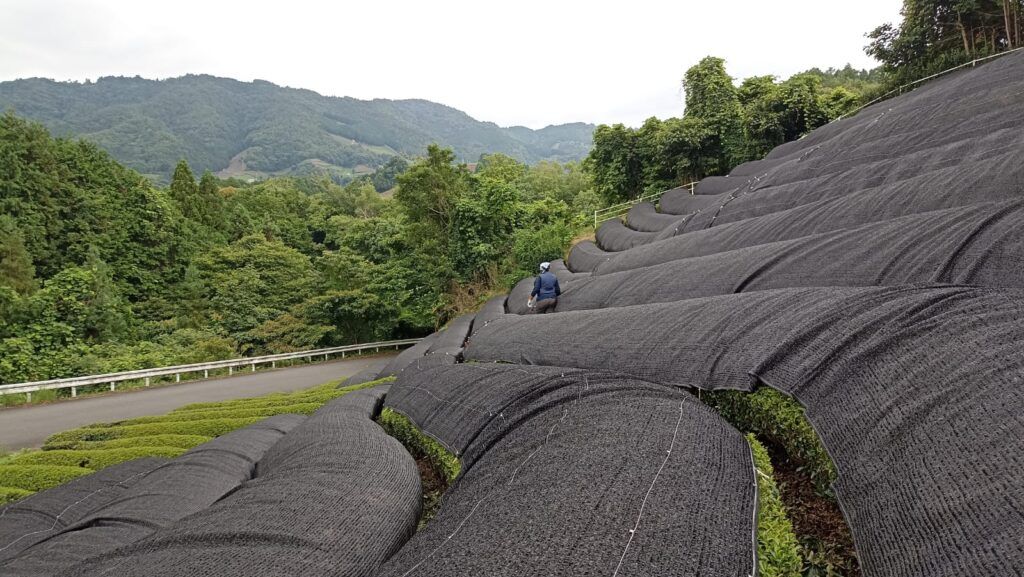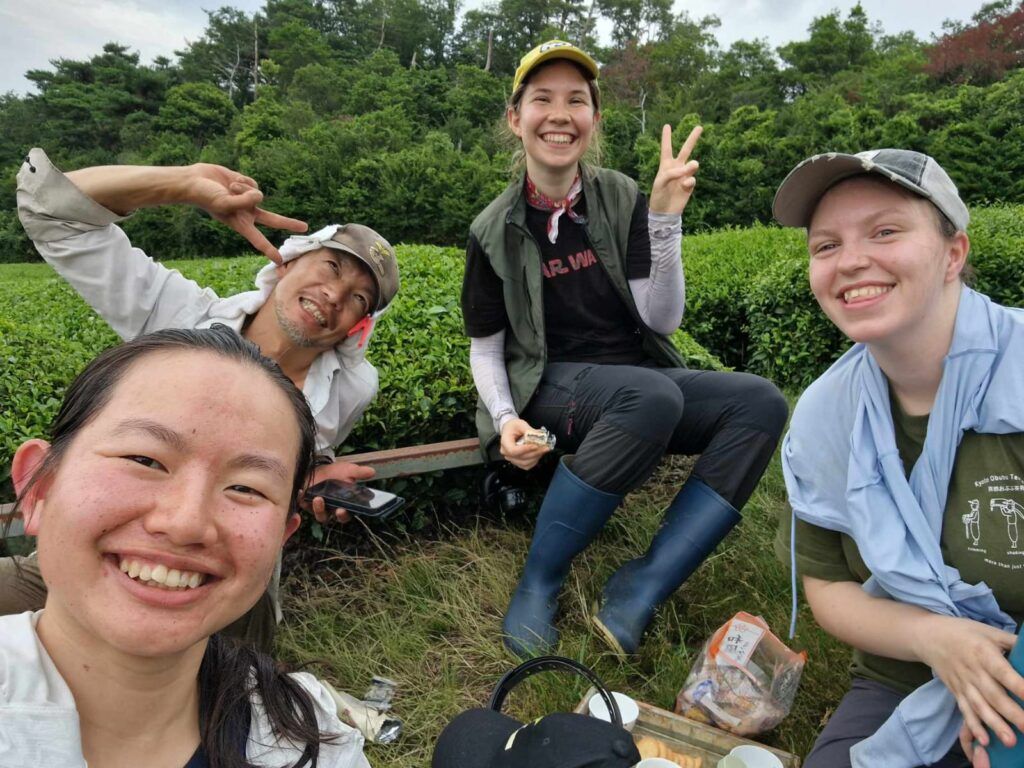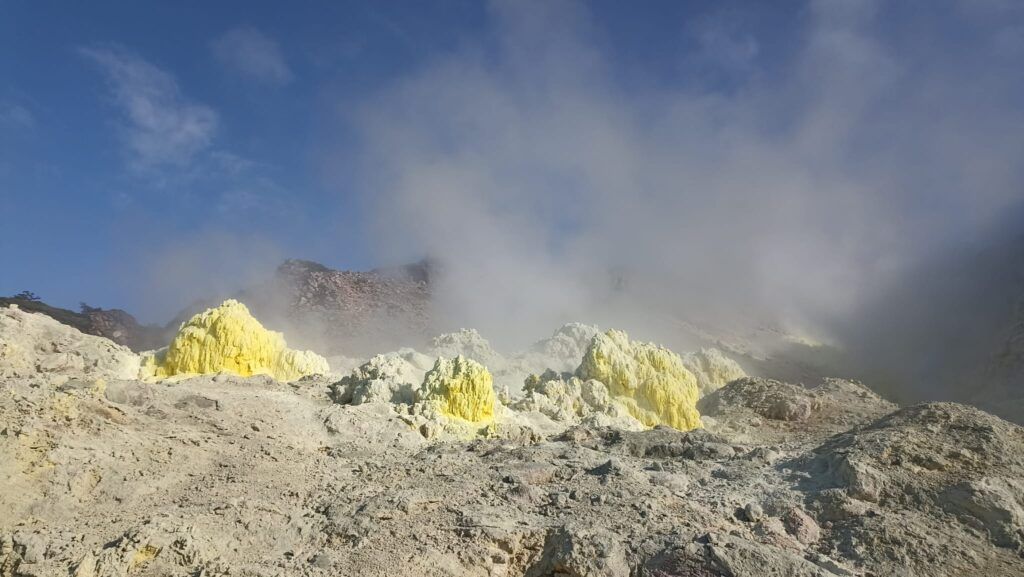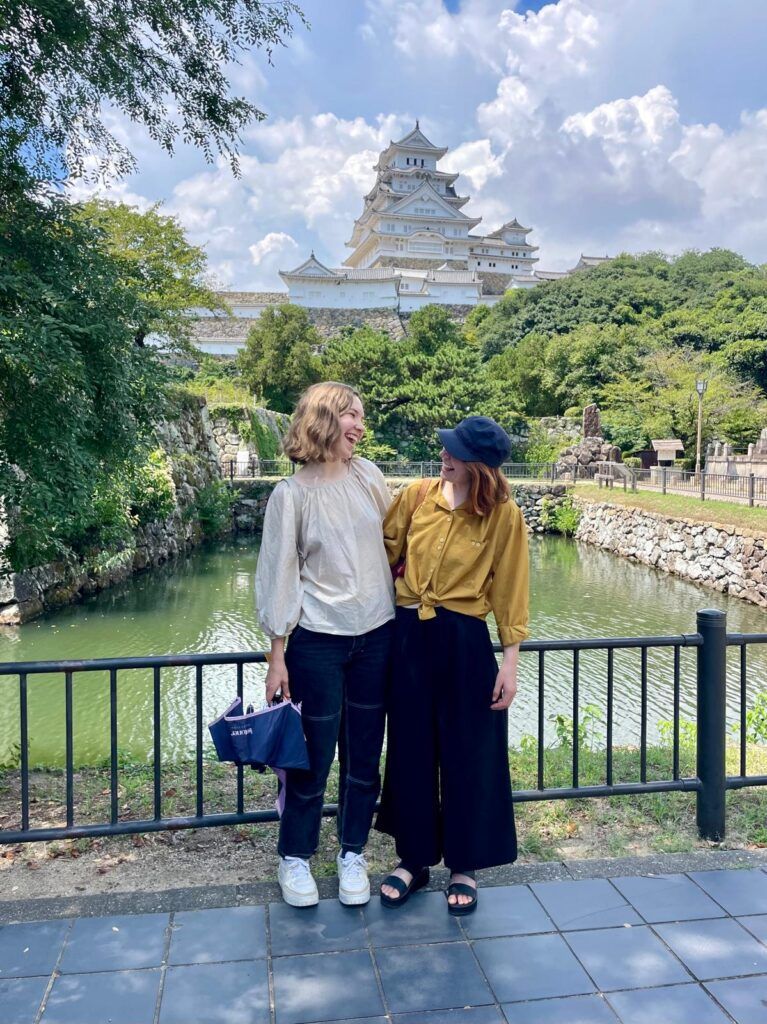Whats up everybody!
You may need learn my Spring Weblog about my first quarter at Obubu. In case you are interested by studying extra about what assistant managers rise up to in the summertime and what I did in my second quarter right here, maintain studying!
Summer season in Japan is not any joke: 37°C at 80% humidity is what the workplace thermometer appeared to show each day for 3 months straight. After all that is an exaggeration as there are some variations between days and early July is a bit cooler because of the excessive rainfall. Nevertheless, coming from France the place temperatures above 35°C are thought-about a heatwave and humidity is low, this was positively outdoors of my consolation zone. Whereas uncomfortable, you do get used to the fixed sweating and also you learn to finest handle the warmth.
One of many key summer time actions on a tea farm is the Summer season harvest. With the summer time buds having a brief dormancy interval in comparison with the spring buds, fewer vitamins are concentrated within the leaves, resulting in a barely completely different style than the earlier harvest. For that reason, we produce completely different teas in the summertime than within the spring. For instance, on this interval, we harvest tea leaves for Sencha of the Summer season Solar, Sencha of Brightness, Premium Cooking Matcha and Wonderful Cooking Matcha. In comparison with the spring, this harvest is far hotter however extra relaxed. Opposite to what one would possibly suppose, the important thing to farming in excessive temperatures shouldn’t be shorts and t-shirts, however extra layers (to be shielded from the solar from head to toe) and fan vests! Whereas they don’t fully cool you down, this breeze makes a world of a distinction if you end up sweating all day. So long as you might be nicely ready for the warmth (with salt tablets, sports activities drinks, and many water) and never phased by the thought of sweating buckets, the summer time harvest could be very enjoyable.
![Assistant Supervisor Weblog by Alix [Summer season] Assistant Supervisor Weblog by Alix [Summer season]](https://obubutea.com/wp-content/uploads/2024/11/noe-and-pau-1024x768.jpeg)


In case you learn the Obubu Publication (which I extremely suggest and never simply because I co-write it with assistant supervisor #8 Katrina), then you might be most likely conscious that summer time at Obubu can also be Wakoucha (Japanese black tea) making season! Interns get the prospect to reap and course of their very own tea in batches of 20-30 kg of leaves. I made my very own batch referred to as ブリオ茶 (brio-cha just like the french pastry brioche) from 5 kg of leaves by withering for in the future, machine rolling and at last oxidizing beneath a bamboo tray for 4 hours. This fast oxidation resulted in spicy and floral aromas which, after drying barely mellowed out and turned to extra fruity flavours.


In the direction of the top of the season, all of this yr’s intern and employees black teas (14 teas in whole) have been in contrast in a tea tasting competitors. Amanda (intern #173) gained first place along with her smoky wakoucha and Jordan (intern #172) got here in at an in depth second spot with a posh floral and fruity wakoucha. In case you are questioning about my tea, Brio-cha managed to get one vote which didn’t put it on the rostrum however remains to be higher than none!

August is often the month throughout which employees members take their summer time holidays because it is without doubt one of the least busy durations of the yr: there may be little to no farming and only a few vacationers come to Japan at the moment. To flee the Japanese summer time warmth and humidity, I selected to discover Japan’s northenmost island Hokkaido. By renting a automobile on the island for even just some days, one can expertise many diversified and jawdropping landscapes, from lakes, seashores, mountains, forests, and flower fields, to volcanoes, and pure scorching springs, it’s actually a surprise. The native delicacies can also be well-known for seafood, curry soups, and different much less widespread meals in Japan like cheese and wine because of Hokkaido’s cooler climate.






After a nature-filled itinerary in Hokkaido, Mac (assistant supervisor #5) and I headed south for a extra tradition oriented journey. With our sail set to the artwork islands of Naoshima, we stopped at a number of landmarks on the best way. Our first vacation spot was the unimaginable Himeji citadel, the most important and certainly one of Japan’s oldest remaining medieval buildings. The subsequent cease was Bizen, a small city well-known for its pottery which is taken into account the oldest of the 6 historic kilns pottery kinds (Bizen-yaki, Shigaraki-yaki, Tokoname-yaki, Seto-yaki, Tamba-yaki and Echizen-yaki). After assembly a couple of potters and spending a bit an excessive amount of cash on teaware, we lastly headed to Naoshima, to go to lovely museums, see well-known artwork installations (like artist’s Yayoi Kusama’s pumpkin sculpture), and naturally drink tea whereas overlooking Hiroshi Sugimoto’s Glass Teahouse artwork set up.



Again at Obubu, Akky-san taught interns and employees learn how to hand-make sencha in a handrolling occasion for everybody to study this conventional manner of constructing sencha in Japan. This was completely different to the seasonal hand-picking and rolling occasions the place the leaves are pan fired and rolled, however similar to Kenta-san’s handrolling workshop with steamed leaves and conventional handrolling desk “hoiro”.


The summer time closed off with the final weekend of the batch of summer time interns Noe and Jocelyn throughout which a storm was anticipated to hit Wazuka. We hid from the storm by watching motion pictures and sharing tea and do-it-yourself meals within the Obubu tearoom. The storm fortunately by no means truly hit Wazuka and we have been capable of share lovely moments whereas having fun with an unforgettable sundown.

See you quickly for extra tea adventures!
またね!
– Alix


![Assistant Supervisor Weblog by Alix [Summer season] Assistant Supervisor Weblog by Alix [Summer season]](https://i1.wp.com/obubutea.com/wp-content/uploads/2024/11/noe-and-pau-1024x768.jpeg?w=696&resize=696,0&ssl=1)
